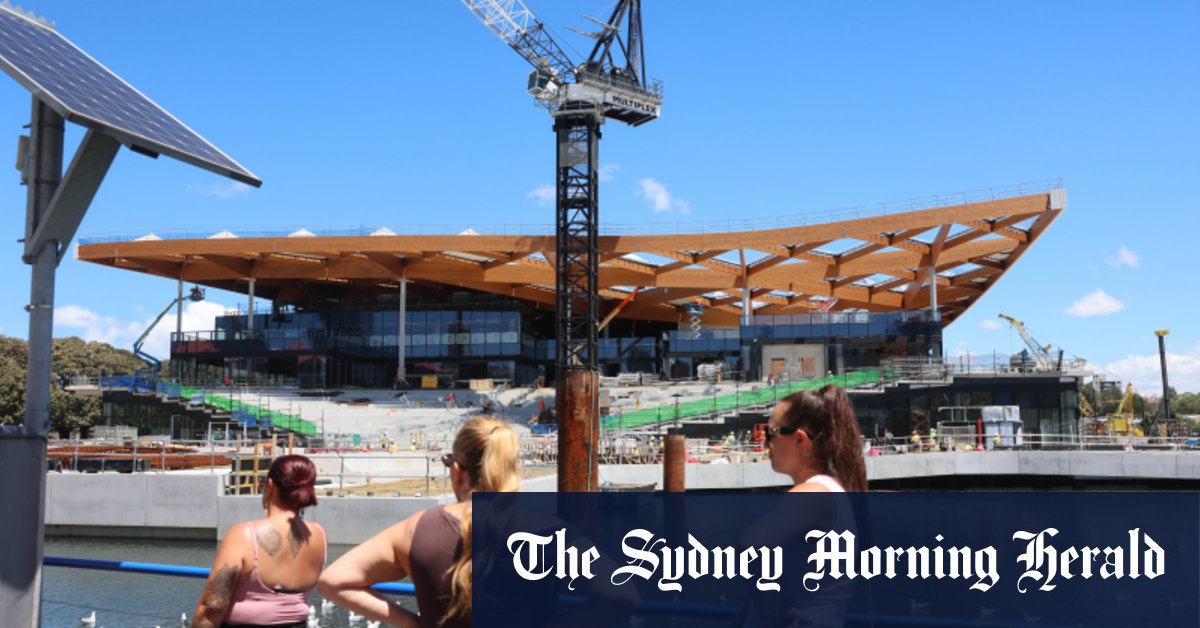“We have no reason to believe this will change in the foreseeable future,” the statement said.
“It is taking longer than anticipated to finalise our financial results due to extenuating circumstances related to the once-in-a-generation transition to the new Sydney Fish Market. We are finalising the accounts with the appropriate level of due diligence, and these will be lodged this quarter.”
The statement said the company and its technology partner had mutually agreed to end their collaboration on SFMBlue, and the trading pause was an opportunity to engage with customers and stakeholders.
“Presently, our priority remains on ensuring a seamless transition to the new, iconic Sydney Fish Market facility on Blackwattle Bay.”

Fish sold at auction from the Sydney Fish Market are given picking slips before being wheeled into refrigerated trucks and taken to restaurants, fishmongers and grocery stores.Credit: Kate Geraghty
The financial crisis engulfing Sydney Fish Market comes five years into the construction of a new market that has already cost the government at least $836 million, and is set to be handed to the company on a 40-year lease for peppercorn rent.
It will also house 27 new subtenants paying market rent directly to the government.
The building was originally slated to open in 2024, but is now not expected to open until at least November, having been beset by construction delays, the collapse of a crane, and haggling over the design.
An Infrastructure NSW spokeswoman said Sydney Fish Market had committed to relocate to the new building once it was complete under the agreement for lease that it signed with the government in 2019, and the government was preparing to hand over the building later this year.
“The question of insolvency has not been raised by SFM with Infrastructure NSW, and we have not received any requests from SFM for financial support,” she said.
Sydney Fish Market’s 38 existing tenants, who own half the shares in the company (with the other half owned by the NSW Catchers Trust on behalf of the state’s fishermen), have consistently argued that the new building has insufficient power to meet their considerable refrigeration requirements.
They have warned that the building may need to resort to diesel generators over the Christmas period, causing disturbance to its neighbours and breaching environmental standards.
Wholesalers are concerned that delays caused by the logistics of moving seafood between levels after it has been sold at auction will flow on to retailers and reduce the value of their product.
If retailers do not receive their stock until the afternoon, they lose a day of trading, and potentially 20 per cent of the value of a product with a five-day shelf life.

Seafood wholesalers and retailers at the Sydney Fish Market are concerned that the movement of fish from the auction floor to the shops will be inefficient in a multi-level building.Credit: Kate Geraghty
Other gripes include the increased cleaning and maintenance costs of the new building and whether it will be able to meet its goal of doubling annual visitor numbers, given there is no increase in parking places, and a designated ferry wharf has disappeared from scope.
Loading
Infrastructure NSW promised when the project was announced that it would include a ferry wharf, but it is now describing the structure as a “recreational passenger wharf” that will be used for various private and public purposes and “can accommodate a ferry stop”.
INSW said it was discussing options for a Sydney Ferries commuter wharf with Transport for NSW.
Most of the existing tenants have refused to sign their new leases, which is likely to cause further construction delays because they cannot lodge development applications or enter contracts with builders. The doubts over the viability of the market are a further disincentive to sign.
If Sydney Fish Market becomes insolvent, the government can dissolve the head lease, but the NSW seafood industry would be thrown into chaos by the demise of the Dutch auction, which is unique in Australia and ensures that the daily fishing catch is sold quickly at fair prices.
Former chairman Grahame Turk said the biggest winners if the company went bust would be the wholesalers because they would pick up the $150 million worth of fish currently being sold at auction.
“If Sydney Fish Market disappeared, the fishermen would then be in the hands of the wholesalers, which would be very difficult for NSW fishers,” Turk said. “They will again be price-takers.”
The Business Briefing newsletter delivers major stories, exclusive coverage and expert opinion. Sign up to get it every weekday morning.

